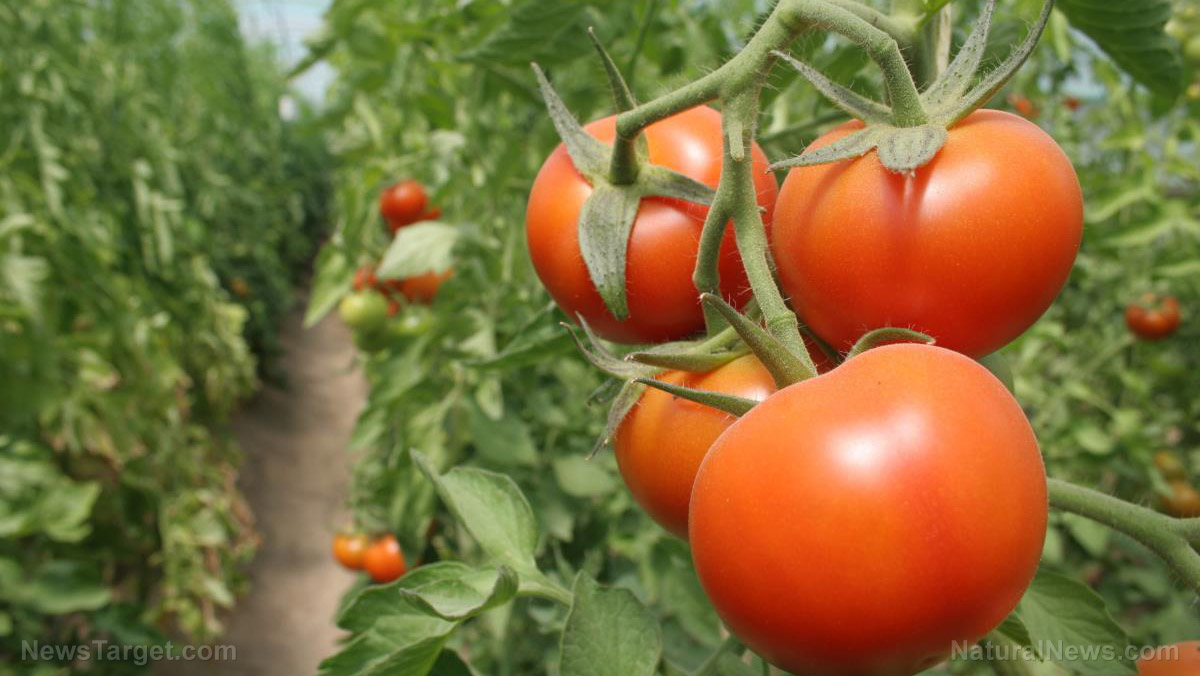How to save tomato seeds to grow next year
10/25/2021 / By Divina Ramirez

Saving seeds from fresh fruits or vegetables is a great way to save money on seeds for the next growing season. Seed saving is especially beneficial for people who grow their own food. It involves choosing the best plants from which to save seeds, harvesting those seeds at the right time, then storing them properly over the winter.
Tomatoes are among the best choices for seed saving. For starters, tomato plants have flowers that are self-pollinating. Meaning, they can produce fruits even if there are no pollinators present. They also have seeds that require little or no treatment before storage.
Read on to learn more about saving tomato seeds.
When to save tomato seeds
Tomato seeds can be collected from tomatoes that are fully ripe. The best time to harvest the fruits is normally around mid-summer to early fall. Seeds collected from such tomatoes are likely to be of good quality.
Tomatoes are a rather slow-growing plant, which is why most gardeners start them indoors early in the spring. It can take tomato seeds six to eight weeks to become viable seedlings and up to two months to bear ripe, juicy tomatoes once planted outdoors. (Related: Include these companion plants in your garden to help grow tomatoes.)
However, harvest time varies somewhat depending on the size and the variety of the tomatoes planted. Cherry or pear tomatoes, for example, will start bearing fruits much faster than large beefsteak tomatoes.
But overall, tomatoes are one of the slower-growing vegetable plants.
How to save tomato seeds
Seeds from all kinds of plants can be saved simply by waiting for the seed pods or the fruit or vegetable to dry, then opening them up to collect the seeds. Tomatoes take a bit more work than that because their seeds are enclosed in a gel-like sack that contains growth inhibitors to prevent the seeds from sprouting inside the fruit.
The best way to remove that gel-like sack is to allow the fruits to rot and ferment. In nature, this process starts when the tomato falls off the plant. But you can also speed up this process.
The first step is to choose the best-looking tomatoes. You want to save seed from the finest fruits to make sure that next year’s tomatoes will look good as well. Expert gardeners advise saving seeds only from open-pollinated tomatoes, which include all heirlooms. This is because seeds from hybrid tomatoes, while they may sprout and grow, often grow into plants that revert to one of the genetic parent plants. That plant could produce much different fruit than what you are expecting.
Rinse and pat dry your chosen tomatoes. Cut each one across the middle, then scoop out the seeds into a bowl. Add a cup of water to the bowl, then set it aside for two to four days to ferment. The seeds will soon be covered with a layer of mold and will start to smell. Cover the bowl with cheesecloth to keep fruit flies out and to diminish the spread of the unpleasant odor.
Check on the seeds every day. What you want to see is a layer of mold covering the seeds. The process is done when bubbles start rising from the mixture and the seeds settle to the bottom of the bowl. Don’t leave them fermenting for too long or they may start to germinate.
Once the seeds are done fermenting, scoop out the mold and any hollow seeds that floated to the top. Add one cup of water and stir, then strain the seed mixture into a colander. Rinse the seeds well and remove any remaining pulp bits and mold so that only clean seeds remain.
Spread the seeds onto either a piece of coffee filter or a shallow glass dish to dry. Don’t use paper towels or the seeds will stick to them and be difficult to remove. Set them in a warm, dry spot and allow to dry completely. Give the coffee filter or glass dish a gentle shake every day to keep the seeds from clumping. Don’t try to speed up the process by drying the seeds under the sun or in an oven or you might destroy them.
Once the seeds are thoroughly dry, store them in an airtight container in a cool, dry place. Remember to add a label to your container.
Saving seeds from fruits and vegetables is an important step to becoming more self-reliant. Try it out yourself by saving tomato seeds using the tips above. (Related: A homesteader’s guide to seed saving.)
Learn more about saving seeds for planting at HomeGardeningNews.com.
Sources include:
Tagged Under: food independence, food supply, gardening, green living, harvest, homesteading, how-to, seed saving, seeds, tips, tomato, tomato seeds
RECENT NEWS & ARTICLES
COPYRIGHT © 2017 PREPAREDNESS NEWS




















